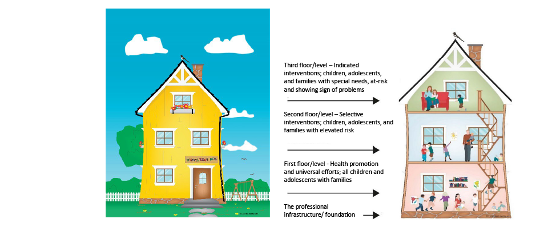The Family’s House is a model for organizing municipal services for children, youth and their families.
The Family’s House is a model for organizing municipal services for children, youth, and their families. The first municipalities in Norway adopted the model in 2002; it consisted of an open kindergarten, maternity care, health station (0-5 years), educational psychology services, and preventive services.
RKBU North works to promote and further develop the Family House model and other municipal collaboration models on behalf of the Norwegian Directorate of Health. On this page, you can find information about the model, research results, and materials that may be useful for those working in the Family House, municipal services, or anyone interested in the topics of collaboration and interdisciplinary work.
The entire purpose of the Family’s House is preventive, but other goals include improving interdisciplinary collaboration between professionals and offering coordinated municipal services. Indeed, the combination of these aspects allow Family’s Houses to provide better, more comprehensive support to children and families, which is readily available in their communities (Haugland, Rønning, & Lenschow, 2006; Martinussen, Hansen, & Adolfsen, 2019).

[Loading...]